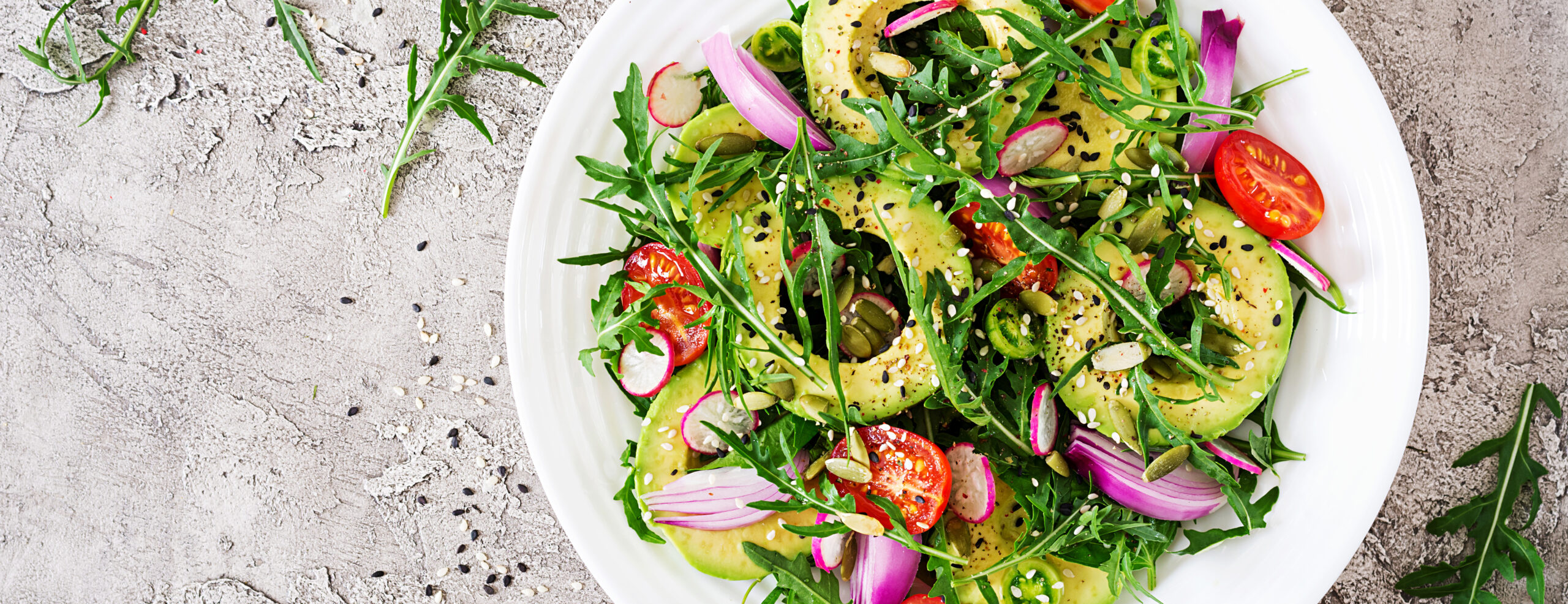
What is a balanced meal or snack?
Experts and dieticians alike use and quote the term “balanced and healthy meals”, but have you ever wondered what exactly this term means?
A balanced meal or diet should include the following:
Protein (found in fish, meat, poultry, dairy products, eggs, nuts, and legumes)
– Fat (healthy***) (found in animal and dairy products, nuts, and oils)
– Carbohydrates (found in fruits, vegetables, whole grains, and legumes)
– Vitamins (such as vitamins A, B, C, D, E, and K)
– Minerals (such as calcium, potassium, and iron)
– Water (both drinking water and foods that naturally contain water)
Whether or not you decide to commit to eating healthy, everyone needs to eat certain essential nutrients, vitamins, and minerals daily in order to remain healthy. These are essential because they perform multiple functions among various organs and systems within the body.
What your plate should consist of:
- Make sure half of your plate consists of vegetables and fruits— the more variety and color the better. When planning your meal, think about vegetables and fruits first.
- For the carbs in your diet, focus on whole grains such as quinoa, brown rice, barley, or buckwheat. This provides a sensation of fullness in your body and an added bonus to your diet— fiber. This segment should make up ¼ of your plate.
- Protein power— the remaining ¼ of your plate. Fish, poultry, beans, and nuts are healthy protein sources and pair well with vegetables on a plate. Try to minimize or cut out red meat if possible, and keep away from any processed meats like bacon, hamburgers, hotdogs and cold cuts.
- Healthy fats, like fatty fish (salmon, trout, mackerel, herring), vegetable oils (olive, canola, soy, corn, sunflower or grapeseed, seeds) and nut products (nuts and nut butters). Stay away from saturated fats, like beef, butter or coconut oil, and trans fats like margarine and baked goods. *Remember that low-fat doesn’t mean healthy!*
- Drink water or tea. Skip sweet beverages, and limit milk and dairy products to one to two servings each day. Juice should be limited to a small glass each day
Tips for success:
“Choose nonfat or 1% milk instead of 2% or whole milk. Select lean meat instead of fatty meat. Select bread and cereals that are made with whole grains and are not prepared with a lot of fat,” (Dansinger, 2021).
Balanced snacks can be eaten between meals to cure hunger. They should consist mostly of protein, which keeps you full and satisfied until the next meal, while also including some healthy fats and fiber. See the image on the top right for some snack ideas that can even go with your meals.

